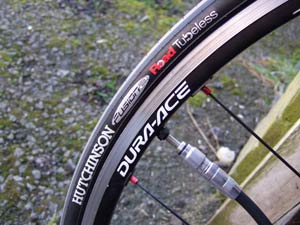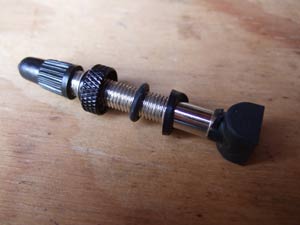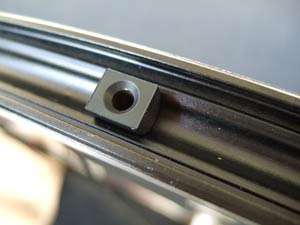 |
 |
 Perfect seal needed here |
Hutchinson Fusion 2 Tubeless 700×23 £34.99 each
Shimano 7850 Dura-Ace SL Tubeless clinchers £679.98 per pair
So far, our test pair of road tubeless wheels and tyres has covered some 750 miles, suffering in the process just one pinch puncture inflicted by a submerged pothole.
We repaired the flat by installing a tube, which did the job nicely enough to stay put over the winter. Unfortunately, by the time we got around to removing it, the area around the valve hole had grown a coating of white aluminium oxide powder.
The effect of this was subtle but insidious; instead of the semi-cylindrical rubber bung of the valve making an airtight seal against the rim, it made one that let air past very slowly. It took some time and several refittings of the tyre in an attempt to cure the leak for the penny to drop.
The cure was simply a thorough clean of the mating surface between rim and valve bung. This was not, however, the complete end of inflation issues. It is vital, when installing the tyre, to get the bead fully seated during initial inflation, which may take air pressure way beyond the 100psi recommended for riding.
It is all too easy to assume, on hearing a succession of ‘pops’, that the bead has seated when, in fact, some part of it is not quite in place. The result will be a loss of perhaps 20 psi over 24 hrs; not enough to spoil a short ride, but too much to ignore.
The problem is how to be sure that the tyre is fully seated without waiting several hours to see if it goes down by some small amount. One answer seems to be to let the tyre down after first inflation, then re-inflate. This almost invariably results in at least one more ‘pop’, suggesting that the bead was not fully seated. Seems a bit of an annoyance to have to do this, but since the tyre stays up nicely once sorted, it is a small inconvenience.
So far, the main riding impression is of exceptional ride comfort, especially at high speed over a bumpy surface. No doubt 2008 Het Volk winner Philippe Gilbert would agree.





